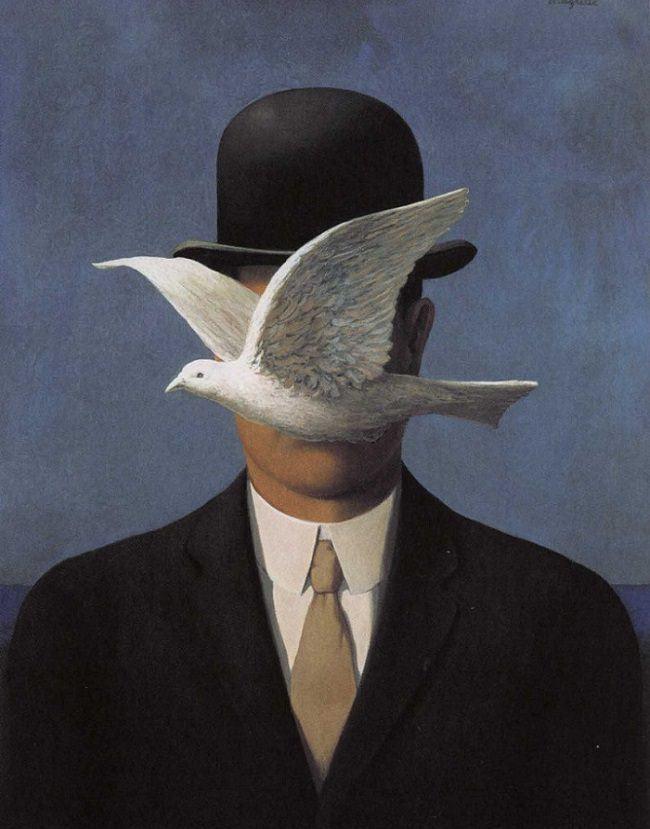Magritte Man with Bowler Hat and Dove l'homme au chapeau melon Statue 6H
Magritte Man with Bowler Hat and Dove l'homme au chapeau melon Statue 6H
SKU:MAG04
In stock
Couldn't load pickup availability
The Man with Bowler Hat and Dove (1964, Oil on canvas, 65 x 50 cm) was a Surrealist painting completed by Rene Magritte. It shows a man wearing a business suit and bowler hat with his face hidden by a white dove. This product is an adaptation of the painting into a statue. The man's identity is obscured by the bird thereby reducing the man's identity to a generic "businessman". Surrealism was a 20th century art movement which mixed improbable dreamlike images as a way to challenge a viewer's understanding of the natural world.
The portrait of the man can be viewed as a variation on Magritte's painting "The Son of Man", in which a man's face is hidden behind an apple. Magritte had the following to say:
"Everything we see hides another thing, we always want to see what is hidden by what we see, but it is impossible. There is an interest in that which is hidden and which the visible does not show us. This interest can take the form of a quite intense feeling, a sort of conflict, one might say, between the visible that is hidden and the visible that is present."
- Man in Bowler Hat with Dove Bird Statue is part of the Parastone Museum Collection of collectible figurines. (PN MAG04)
- Made from resin with hand painted details.
- Includes color card with image of the original painting and a description of the artist.
- Measures: 6 in x 5.25 in W x 5 in D. Depth at base is 2.5 in. Weight 2 lbs.
Rene Magritte (1898-1967) was born in Lessines near Tournai in French speaking Belgium in 1898. He spent his childhood in Chatelet and Charleroi. He attended the Academie des Beaux-Arts in Brussels from 1916 to 1918. There he met the brothers Victor and Pierre Bourgeois and the painter Pierre-Louis Flouquet. In 1919 Magritte contributed to the first issue of the review Au Volant published by the Bourgeois brothers. After a year of military service he worked as a designer, first of all for a wallpaper manufacturer in Brussels and then as a freelance designer of posters, publicity materials and exhibition stands. He painted his first acclaimed Surrealist painting, The Last Jockey, in 1926 and in the same year, along with the other Belgian surrealists, signed the declamatory leaflets Two Disgraces and the Married Couple of the Eiffel Tower. Between 1927 and 1930 Magritte lived in Le Perreux-sur-Marne near Paris, during which time he became acquainted with Hans Arp, Andre Breton, Salvador Dali, Paul Eluard and Joan Miro. Magritte's provocative essay Words and Pictures was published in the last issue of La Revolution Surrealiste in 1929, a year after he painted The Empty Mask.






